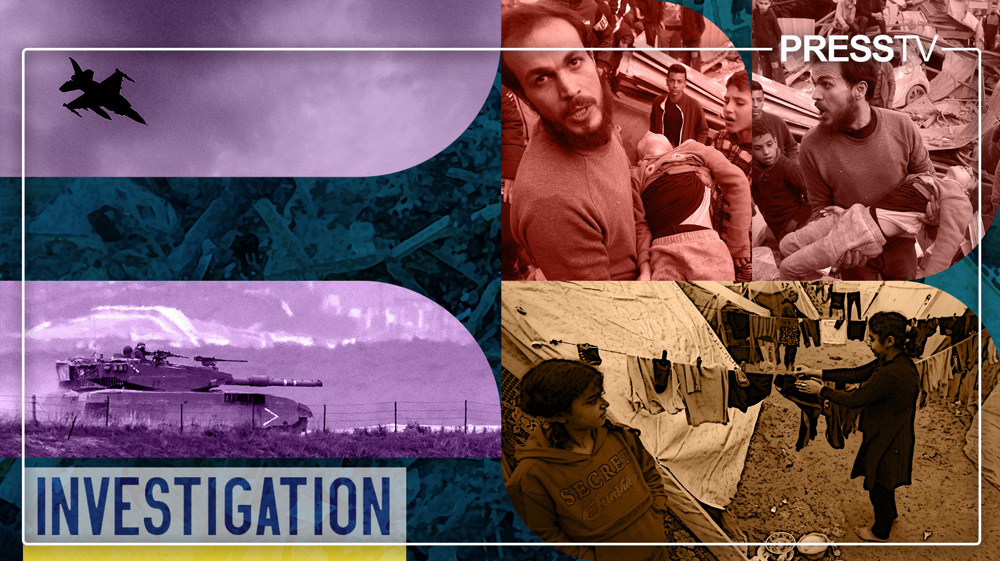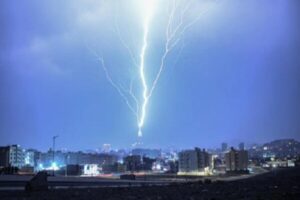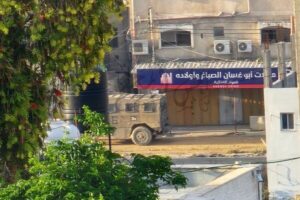By Robert Inlakesh
Israel’s genocidal war on the besieged Gaza Strip has resulted in one of the worst civilian death tolls in modern history, far outnumbering the death toll inflicted by the Daesh terrorist group across Iraq and Syria.
While the narrative has largely been based on numbers, videos and reports from within central and southern Gaza, many of the atrocities committed in the northern part of the territory remain untold.
According to the latest estimates, including those presumed dead under the rubble of destroyed buildings, some 29,124 Palestinians have been killed so far as a direct result of Tel Aviv’s unbridled aggression against Gaza, of which roughly 11,000 are said to be children.
Some 56,000 civilians are also reported to be injured, as roughly 1.9 million, of a population of 2.3 million, are currently without any safe place to take shelter, especially amid the harsh winter.
Prior to launching its ground invasion in late October, the Israeli military called upon the residents of northern Gaza to leave their homes and travel south, along routes that they claimed were safe and secure.
Despite many listening initially, they were later deterred due to a number of indiscriminate Israeli airstrikes on convoys transporting civilians out of the north.
Although the Israeli army claims to have essentially “cleansed” northern Gaza, the Gaza Ministry of Health Spokesperson, Ashraf al-Qudra, continues to issue statements that reveal hundreds of thousands remain trapped there, in a territory where all the hospitals and other essential services are defunct.
For weeks, Israeli regime officials publicly claimed that southern Gaza was safe and that their military attacks were focused on the north, despite having carried out just under half of their total airstrikes in the south.
Then, after receiving an alleged warning to minimize civilian casualties from the US government, it invaded southern Gaza on the ground using the same tactics as it did in the north.
As of early November, following failed attempts to completely ethnically cleanse the north – or what rights bodies describe as “forced transfer”, deeming it a war crime – some 350,000 to 400,000 civilians remained.
Those who remained behind
Press TV Website spoke to a contact, who is currently living in the Jabalia refugee camp, who requested to be referred to as Ahmad, asking him why the people chose to remain in the north.
“The people started to leave, actually many left and then came back when they realized it wasn’t any safer and that they may as well die in their own homes here,” he stated.
Ahmad explained that some of his relatives had traveled to southern and central Gaza, some to Nuseirat refugee camp and others to Rafah, but when the Israeli military invaded, the situation changed for those who sought to flee.
“Before the army entered northern Gaza and cut off all the main roads to the south, it was easier, but afterward they started humiliating the people and shooting the men randomly, so some decided to just send the women and children, with only a few men, because we heard about them shooting all the men,” he explained in a conversation with the Press TV Website.
Corroborating Ahmad’s story, a civilian from Beit Lahia, who had previously departed from northern Gaza and was made to strip as he passed Israeli soldiers in a single file line, narrated the horror.
“I saw the soldiers take two men out of the line and marched them behind a tank, then we all heard the gunfire and ducked, they executed them both and some of the women who were behind me saw it directly,” he told the Press TV Website.
In another case, a doctor from the Jabalia refugee camp, who chose not to reveal his identity, stated that when his hospital was evacuated, he was forced to stay on the phone with an Israeli soldier, who directed him on where to walk.
He described how he miraculously survived, after the soldier on the phone led him into an ambush where Israeli drones opened fire on him, forcing him to take cover. He was informed that if he hung up the call, he would be targeted directly with an airstrike and that the soldier knew where his family lived.
Ruba, a young woman from the Rimal area of Gaza City, in conversation with the Press TV Website, recounted how one of her cousins was murdered by the Israeli regime soldiers.
“He went out to search for food and get water, because you know we have nothing to eat and sometimes are just searching to find leaves to stop us from feeling so hungry,” she stated.
“After a few hours, everyone started to get worried, so some of my relatives went to search for him and they found his body full of bullets and parts of his brain were even out of the skull.”
Blindfolded and beaten
In another case, a man who chose to go by the name Hussein was taken captive by Israeli soldiers in northern Gaza while carrying out his duties as an emergency ambulance driver.
“They beat all of us and kept us constantly blindfolded with our hands tied, only I and one friend of mine are able to walk, the rest of the group I was with can’t even walk, they broke their bones, this is how badly they assaulted us,” she told the Press TV Website.
Hussein, who was recently released from captivity and is now in southern Gaza, said they “were not able to sleep” and were “humiliated” by the regime forces.
In another case, a middle-aged man from Jabalia city, who also pleaded anonymity while speaking to the Press TV Website, said he was sexually assaulted and beaten with rifles by the regime soldiers.
He said they grabbed him inappropriately and kicked him in his private area. He also suggested that there has been sexual violence against women in northern Gaza by Israeli soldiers.
“I have heard horrible things. What you have to understand is that here in Gaza this is not an easy issue for someone to speak about so openly. So, I don’t think many of the female victims will tell their stories if what I have heard is true,” he told the Press TV Website.
“We know they have thrown our women from roofs, they have beaten them, killed their husbands in front of them, they have filmed themselves going through the underwear of women and have even put women and children in rooms and thrown explosives in to kill them.”
The man further said that he won’t elaborate on what he has heard, referring to the Israeli regime soldiers as “an army of demons.”
A young man named Akram, originally from Beit Hanoun, said he witnessed airstrikes that left his neighbors scattered into pieces on the road and that “the buzzing of drones never stops and the targetings [airstrikes] are happening so much that we don’t even flinch now”.
“We spend the days in the streets because we have no homes now, then at night we find an area to sleep, you just get used to walking next to martyrs on the streets, sometime people will find the martyrs’ bodies being eaten by cats and dogs,” he told the Press TV Website.
“Even if I told you everything and I don’t have the time now, you wouldn’t be able to imagine what it is like, we had to kill a donkey to eat, people will even kill any animal just to have food, but even the animals are starving.”
Reports are now emerging from northern Gaza, indicating mass field executions of elderly Palestinians, along with women, men and children of all ages.
The problem, however, is that very few reporters remain in the north and there is no way to record the true gravity of the abuse and suffering there, as even hospitals have been rendered non-operational.
Robert Inlakesh is a journalist, writer and political analyst, who has lived in and reported from the occupied West Bank.




